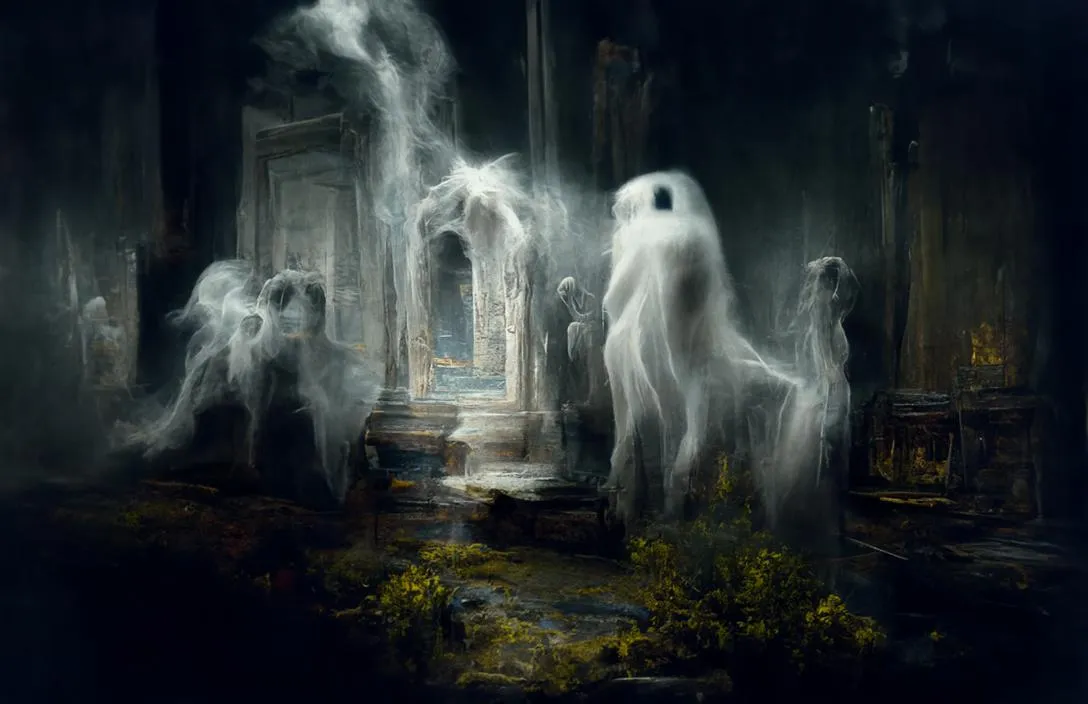Most people know that ghost hunters make use of EMF detectors in order to identify the presence of a spirit. But where did this belief stem from? As it turns out, the idea has been around for quite some time.
The theory of electromagnetism which set the foundation for wireless communication was built during the second half of the 19th century, around the same time as spiritualism started to become popular. This new belief centered on the fact that it was possible to talk with souls who had already passed away. Speculations about this idea are not new, however; people have been discussing them since antiquity. Yet, it was in 1848 when the Fox sisters from New York began to host séances and share messages from the dead with their guests that the modern spiritualist movement gained momentum. Soon enough, many mediums in Europe and especially England claimed they could do the same. Some people thought these were just hoaxes, but others found these claims believable – that after death human souls remain present in an ethereal medium that envelops ordinary matter.
In 1687, Isaac Newton’s inverse-square law of gravitation was a great success and this led the scientific community to believe that physical forces act from a distance. Scientists like Ampere and Coulomb used this idea to study magnetic and electric forces. However, James Clerk Maxwell thought differently about electric and magnetic effects in the early 1850s. Using Faraday’s theories, he believed these effects were all-encompassing and could be conveyed by an ether traveling at the speed of light. This discovery was published in 1873, and then Hertz proved it with oscillating electrical circuits in the 1880s. Maxwell even deduced that light itself is an electromagnetic wave.
In an article on “Ether” for the Encyclopedia Britannica Maxwell wrote
Ether or Aether, a material substance of a more subtle kind than visible bodies, supposed to exist in those parts of space which are apparently empty… Whatever difficulties we may have in forming a consistent idea of the constitution of the aether, there can be no doubt that the interplanetary and interstellar spaces are not empty, but are occupied by a material substance or body, which is certainly the largest, and probably the most uniform body of which we have any knowledge. Whether this vast homogeneous expanse of isotropic matter is fitted not only to be a medium of physical interaction between distant bodies, and to fulfill other physical functions of which, perhaps, we have as yet no conception, but also … to constitute the material organism of beings exercising functions of life and mind as high or higher than ours are at present – is a question far transcending the limits of physical speculation.
In 1873, Peter Guthrie Tait and Balfour Stewart wrote a book, “The Unseen Universe”, which discussed the potential spiritual implications of the luminiferous ether. It suggested that matter and mind exist eternally as configurations of spirit in the ether. This book was extremely popular in its day, but others were not so quick to accept its radical ideas. William Thomson posited that matter consists of Helmholtzian vortices in a perfect fluid ether, an idea which inspired Tait’s work. Here is a copy of the book if you are interested.
Lord Rayleigh, who was the head of the Cavendish Laboratories at Cambridge from 1879 to 1884 and the President of the Royal Society between 1905 and 1908, is known both for his 1902 experiment which aimed to find evidence of the luminiferous ether and the discovery of argon (for which he received a Nobel Prize in Physics in 1904). He had another interest, though less well known: psychical phenomena. His obituary in 1919 mentioned an address he gave to the Society for Psychical Research, in which he recalled some experiments about hypnosis that took place in Cambridge during the sixties. The results convinced him of the possibility of influencing unwilling minds by suggestion. Later on he became fascinated with Daniel Dunglas Home and other mediums; despite being generally disappointed with their performance, he found some incidents hard to explain.
Next comes Sir Oliver Lodge, a prominent physicist in the late 19th and early 20th centuries. In 1887, he created the coherer, which enabled wireless communication to be viable. He also dedicated a great amount of his time to studying the luminiferous ether. This became the topic of his book “The Ether of Space” is which he wrote;
The universe we are living in is an extraordinary one; and our investigation of it has only just begun. We know that matter has a psychical significance, since it can constitute brain, which links together the physical and the psychical worlds. If any one thinks that the ether, with all its massiveness and energy, has probably no psychical significance, I find myself unable to agree with him.
Lodge, like his friend Arthur Conan Doyle, was a staunch believer in the spiritualist movement-going so far as to stick with it even after many of its founders had been exposed as frauds. He wrote a book called “Raymond” in 1919, detailing his own attempts to contact his son who died during World War One. It’s interesting that early developments in wireless communication (along with modern physics) might have been inspired by people’s efforts to communicating with the dead.
